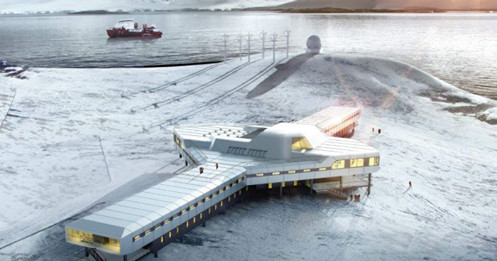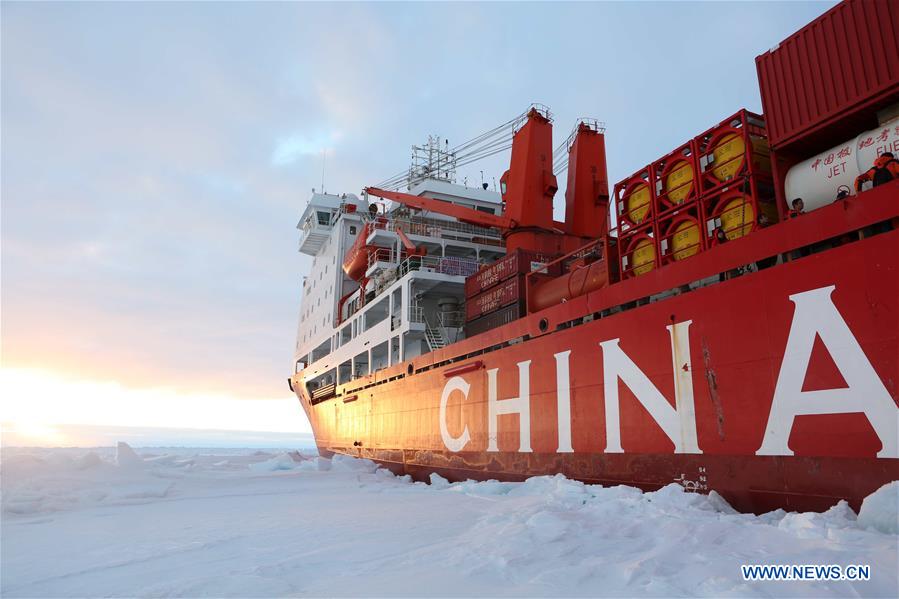
Are they really a problem?
A 2019 article from the ABC (https://ab.co/2I5a1cL) about the proposed new Chinese Base in Antarctica, questioned why Australia had already let China build three other bases on Australia’s Territorial Claim. The article was somewhat misleading and poorly researched which was surprising for the ABC but not so surprising for modern journalism. The journalist didn’t even bother to contact the Australian Antarctic Division for comment so it seems to have been mainly a scaremongering piece.
So this is my attempt to clarify how things work from a geopolitical point of view in Antarctica to counter some of the misinformation that is out there about Antarctica and the Antarctic Treaty.
Antarctica is a bit like a Monopoly board. In Monopoly if you want to put up hotels on your space you have to buy the space first then if you can afford to buy the hotels you can put them up. In that case the price is the cost of the land and then the cost of the hotels, and you pay in Monopoly money.
The Treaty
In Antarctica the price of entry is signing the Antarctic Treaty, agreeing to do science there and setting up a scientific programme. This allows you to set up a base and if you have the money you can build it as long as you comply with the environmental protocols of the treaty, submit an environmental assessment and it is approved by the other signatory nations. China has done this for its previous bases and has submitted an environmental impact statement for it’s latest base.
However, Antarctica is still a global commons to non-signatory states (of the Antarctic Treaty), and any state, signatory to the AT or not, technically has the right to build a base anywhere in the Antarctic. If a state is a signatory to the AT and the Protocol on the environment, then they have to follow Environmental Impact Assessment (EIA) procedures before they build said base.
If they are only a signatory to the AT and not the Protocol on the environment, they technically don’t even have to follow EIA procedures, although most states would likely do so nonetheless as it would not put them in the good books of the other Parties, which might backfire if they were ever to apply for consultative status (after signing the Protocol, of course).
History
The original signatories of the Antarctic Treaty were the 12 countries active in Antarctica during the International Geophysical Year (IGY) (1957–58). These countries were: Argentina, Australia, Belgium, Chile, France, Japan, New Zealand, Norway, South Africa, the Soviet Union, the United Kingdom, and the United States.
There are now 53 states that are party to the treaty, 29 of which, including all 12 original signatories to the treaty, have consultative (voting) status. China is one of these.
Of these signatories, the following countries all have territorial claims in Antarctica: Argentina, Australia, Chile, France, New Zealand, Norway and the United Kingdom.
Territorial claims
Article IV (2) of the Treaty says that while the Treaty is in force no-one can assert, support or deny a claim to territorial sovereignty. The AT allows Parties to “agree to disagree” on the claims. It does not render them ineffective, or suspend the claims as such. It does ‘suspend’ the basis for discussion and argument about the claims though by “freezing” the status quo with regard to the claims as it was in 1959.
So basically, no-one talks about the territorial claims (except maybe Argentina which has a long running dispute with Great Britain). There is really nothing to stop any country from coming along and placing a new base on one of the original seven claimed territories as long as they are a signatory to the Treaty and agree to commit to a science programme. China has done this.
China’s involvement
China achieved consultative status in 1985 so they have been involved with Antarctica for 34 years and in that time have built 4 bases. Tzongshan, Taishan, Kunlun and Great Wall.
The first three are in the Australian territorial claim and Great Wall is on King George Island (in the British Antarctic Territory, though this is disputed by Argentina). Two are year long stations and two are summer only.

Chinese researchers laid the foundation of China’s fifth Antarctic research station on Inexpressible Island in Terra Nova Bay of the Ross Sea. This new base will be in the New Zealand claim, not Australia’s claim.
Other bases
What people fail to mention is that Vostok Base, Druznaya 4, Mirny and Progress 2 are all Russian bases on Australia’s claimed territory, then there’s Concordia (French/Italian) and Law-Racovita (a joint Australian/Romanian station) both also on Australia’s claimed territory.
The New Zealand claim has McMurdo Station (USA) sitting in it, as well as the Italian Mario Zucchelli Base, and the Norwegian claim has bases from Germany, India, Japan, Russia and South Africa within it. So China’s presence in the Australian claim is not unusual by Antarctic standards.
Article VII (3) of the Treaty also says that, ‘All areas of Antarctica, including all stations, installations and equipment within those areas, and all ships and aircraft at points of discharging or embarking cargoes or personnel in Antarctica, shall be open at all times to inspection by any observers designated’ by their Treaty nation.
Inspections
So technically, anyone can inspect anyone else’s base and sometimes they do but it is not a priority for three reasons:
1. Logistics – often the bases are separated by long distances and it costs a lot to get there and weather can wreck plans very quickly
2. Scientists and base staff have other priorities rather than inspecting bases, though various bases often host scientists of many nationalities. China has done this.
3. If I don’t tell, you won’t tell. There seems to have been a head in the sand attitude where people don’t want to rock the boat so reporting unfavourably on another countries base could invite a tit for tat inspection. Most bases aren’t perfect and it would be easy to find something wrong.
During his visit to Hobart, Australia in 2014, Chinese President Xi Jinping outlined for the first time a Chinese strategy to “understand, protect, and use” the Antarctic. “Understand, protect, and use [exploit]” have since emerged as guiding principles for Chinese polar activities.
Compare this with say, New Zealand’s strategy of ‘value, protect and understand’. The Protocol is not “up for renegotiation in 2048” as many seem to think (including myself in the past). Parties can request a review conference, which might result in some changes to the Protocol, but it is not being “renegotiated” per se.
Resources
China is a resource hungry nation so I suspect, like other countries, it is positioning itself for 2048. At that time their may be a slight chance of calling for a review of the ban on mining. They, like other countries, are also very interested in marine resources.
But China is not the only country eyeing Antarctica for it’s resources so I think this article is driven somewhat by anti-Chinese sentiment, factually based or not.
For example, in 2012, the Russian delegation submitted a paper to the 35th Antarctic Treaty Consultative Meeting, which mentioned that their scientists were interested in the ‘Determination of structure, geological evolution and potential mineral resources of the Antarctic lithosphere’.
China’s view
According to Anne Marie Brady, a researcher at the University of Canterbury on Chinese domestic, foreign and polar politics. ‘China interprets Antarctic sovereignty as undetermined. In an area of undetermined sovereignty, a state may construct a case to argue for sovereignty rights by means of discovery, by naming geographical sites and mapping, and by continual presence and occupation’.
‘In just over a decade, as a result of a massive budget increase for polar capacity projects, China has ceased being a minor player in the polar regions and is becoming a major actor.
It has expanded and deepened its physical presence in Antarctica through new bases. And also made significant geographical discoveries and named hundreds of sites. China now has more money than any other polar state to spend on new infrastructure. This would include bases, planes and icebreakers’.(see her full report at http://bit.ly/2WEX3GZ)
Breaches
Article I(2) of the Antarctic Treaty states that ‘military personnel and equipment may be used for scientific research or any other peaceful purpose [only].’ Article VII(5) (c) requires countries to report details of any military personnel or equipment to be introduced into Antarctica. China has frequently failed to accurately report the extent of its military’s activities in Antarctica. The Chinese military also do of some of its scientific projects there.
In 1984, during China’s first Antarctic expedition, armed PLA Navy (PLAN) personnel helped set up China’s first Antarctic station. This fact that was not properly acknowledged in China’s report to the Scientific Committee on Antarctic Research at the time.
In recent years, People’s Liberation Army (PLA) personnel have repeatedly participated in China’s Antarctic program. Their presence being noted in China’s annual report under the Antarctic Treaty. For example, in the 2013–14 season, China’s Antarctic expedition included a PLA logistics expert. He was there to set up the BeiDou-2 global positioning system.
Their Beidou GPS system involves placing GPS ground based stations in Antarctica. This could be seen as a contravention of the Treaty which rules out military activities. The system can be used for military purposes. But the system can also be used for civilian purposes as well so it’s a murky area. Also no one wants to rock the boat by pointing fingers.
The Long Game
China plays a long game so they are unlikely to do anything before 2048 when the Madrid Protocol is up for renegotiation. The protocol, also known as The Protocol on Environmental Protection to the Antarctic Treaty. As well as providing environmental protection for Antarctica it also bans mining indefinitely.
It would be difficult for one country to overturn the ban since it would require unanimous agreement from all parties to the Treaty and there is a common misconception that it is a 50-year ban. It is indefinite so it will not suddenly allow open slather for mining interests in 2048.
However, China has thrown a lot of money at various countries around the world and in return those countries have voted in international forums in China’s interest as part payment. Who is to say the same tactics won’t be tried here.
Contribution
So far the Chinese have been contributing a great deal to science in Antarctica. They have also been helpful to other countries (such as Australia). They have allowed Australian personnel to utilise their icebreaker (Xuelong – Snow Dragon) for moving equipment. There is a great spirit of co-operation in Antarctica. Hopefully it will continue, as long as nations don’t get greedy. Watch this space.

Update
Update: Kim Ellis, head of the Australian Antarctic Division (AAD) ‘declared there was no evidence China had breached the Antarctic treaty’.
(He) expects the inspections planned for the next financial year to reinforce his view. “I have seen nothing in the last eight weeks that there’s any concrete evidence of any form … (suggesting) the speculation in the press is correct,” he said.
“The only way to absolutely confirm that is to undertake inspections. Now I intend to personally participate in those inspections”
So, there you go. As I said previously. Watch this space. If you want to know more about the new Chinese base, that was completed in 2024 check it out here.

